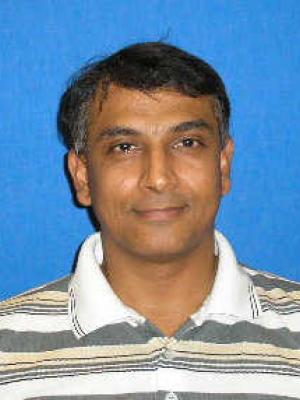We’re Stronger Together
With your help, we can advance education and improve student success in our community.

Dr. Chandrasekhar Kesavan completed his Doctor of Philosophy in the field of Genetics from Dr. ALM Post Graduate Institute of Basic Medical Science, University of Madras, Chennai- India in Jan 2002. Upon completing his Ph.D., Dr. Kesavan joined Dr. Subburaman Mohan’s lab and Dr. David J. Baylink group for his post doctoral training in studying “Molecular genetic studies of mechanical strain on bone” in Jan 2002. In due course of time Dr. Kesavan became a research associate and then, as a scientist at VA Loma Linda Healthcare center joined Loma Linda University in 2010 as an Assistant Research Professor in the Department of Medicine. Dr. Kesavan has published more than 20 papers in the field of bone biology and presented several of his findings as oral, plenary and poster in the American society of bone and Mineral Research. Dr. Kesavan has guided several summer students towards their research career and he is a recipient of NIH and DOD funding.
Dr Kesavan studies are primarily focused on understanding how exercise regulates new bone formation. In the modern era, exercise has been used as an important therapeutic strategy in humans to maintain bone mass and prevent osteoporosis and related disease. Although exercise induced bone response is well known, recent studies have shown that the bone anabolic response to a given mechanical load is highly variable, with some individuals exhibiting robust bone response while other responding modestly and that, this variation in bone anabolic response is largely regulated by genetic mechanism. To identify chromosomal regions containing genes contributing to the variation in skeletal response to loading, Dr. Kesavan used a mouse model as mice and humans share essentially the same genes and because of the established utility of the mouse model in molecuare genetic research to identify genes and their function for complex phenotypes. Using various state-of the-art molecular genetic techniques, Dr Kesavan has conducted studies leading to the discovery of several novel genetic loci that regulate bone anabolic response to mechanical loading between good (C57Bl/6J) and poor (C3H/HeJ)responder inbred strains of mice. Currently, Dr. Kesavan’s research is focused on studying the role of individual molecules within the identified genetic regions.
The second area of his research is focused on identifying novel agonist against bone forming targets using molecular docking approach and then, evaluating the therapeutic potential of these molecules in relation to new bone formation using osteoporotic models.
With your help, we can advance education and improve student success in our community.